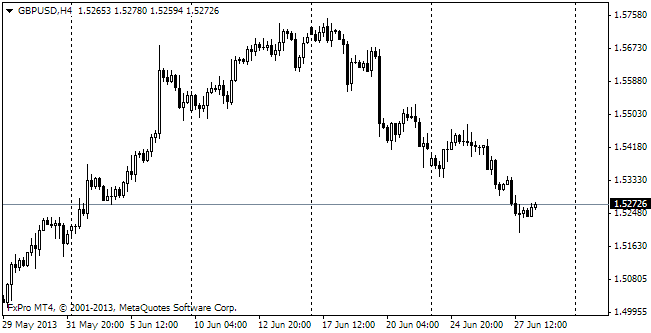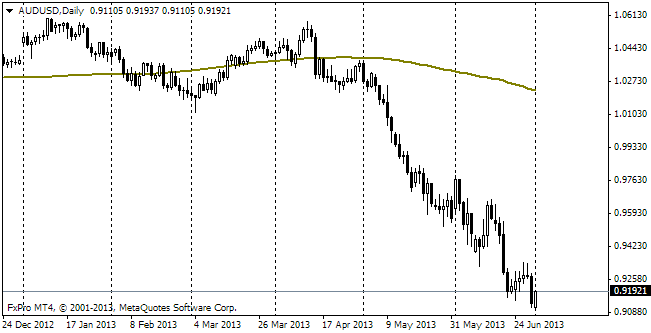EUR/USD
USD fell under pressure yesterday after the release of the fomc's meeting minutes in October. Then the Committee stopped bond purchases, so market participants expected to see the discussion if it was reasonable in the minutes. Among the voting members there was only one dissident – Narayana Kocherlakota, who appealed for further QE until inflation reached the target rates. It is an extremely dovish position, but it was long known to the market and so didn't arouse any surprise. The minutes were remarkable for comments that inflation would remain low for a while despite the large-scale quantitative easing, which was already carried out. USD fell under pressure as the number of stakes on the beginning of policy tightening in the near future sharply decreased. Besides, FOMC is far from being too optimistic, calling the growth rate “moderate” and improvement in the housing market “slow”. In other words, the Committee cautiously watches the factors, which could become an obstacle to timely rate increase. It frightened USD, but also caused decline of the US stock indices. Yet, at their historic highs they had been heavy for a long time. However, the minutes didn't become a turning point for the dollar. USD-bulls didn't let eurusd above 1.2600, stopping the ascent just a pip away from this level and pushing the pair down to 1.2520. Now trading is consolidated in the middle of this channel. The uptrend is continuing, though is very moderate because of the strong sentiment indices, published earlier this week. Today's Prelim PMI will show how well the eurozone is doing and if chances of the triple recession are real. There is a risk that bulls' attempts to form a support in the pair will break against the slowdown in Europe. Besides, the US currency may get support from the news on the consumer inflation in the USA. The PPI data, released two days ago, proved to surpass the expectations.
GBP/USD
Yesterday the pair had been under pressure right till the release of the BOE's meeting minutes. bears managed to hit a new 14-month low, pushing the pair down to 1.5590, but the news that two people in the Committee still voted for rate increases reversed the pair up. The British currency rose to 1.5719 from the daily lows yesterday and is now stabilizing near 1.5660. Today the pair will have a threat in the form of retail sales statistics. Analysts expect to see growth by 0.4% against the previous month and acceleration of the annual rate to 3.8% against 2.7% a month ago.

USD/JPY
The pair is still being purchased. There was just a short half-hour pause as a reaction to the FOMC's minutes, but soon the ascent resumed with the former strength. Facing no obstacles in the comments of the Japanese officials or preceding important levels of consolidation, the pair has already reached 118.40, which makes growth by over 6 figures since the beginning of the month, 13 figures since mid October (the beginning of the rally without correction) and 17 figures off the lower bound of the consolidation since the beginning of the month. Our target remains at 120 till the end of the year and a long flat trend as it was from January to July.

AUD/USD
The aussie fell under serious pressure, which is largely connected with the yen's depreciation. Its attempts to return to the levels of the end of the previous month were ruined by the powerful selling since the beginning of the month. Now trading is held at 0.8580 against 0.8800 on Monday. Yet, AUDJPY is consolidating above 101. A year and a half ago it sharply reversed down at 103, carrying along the Aussie.
